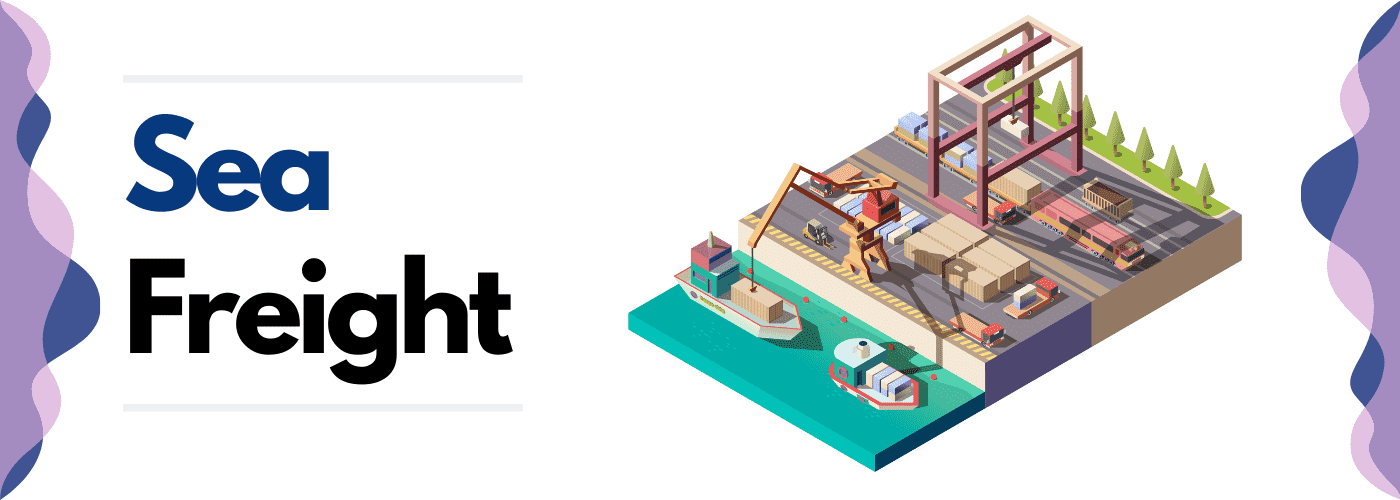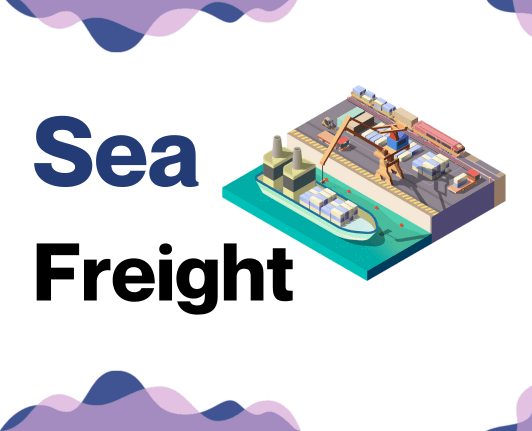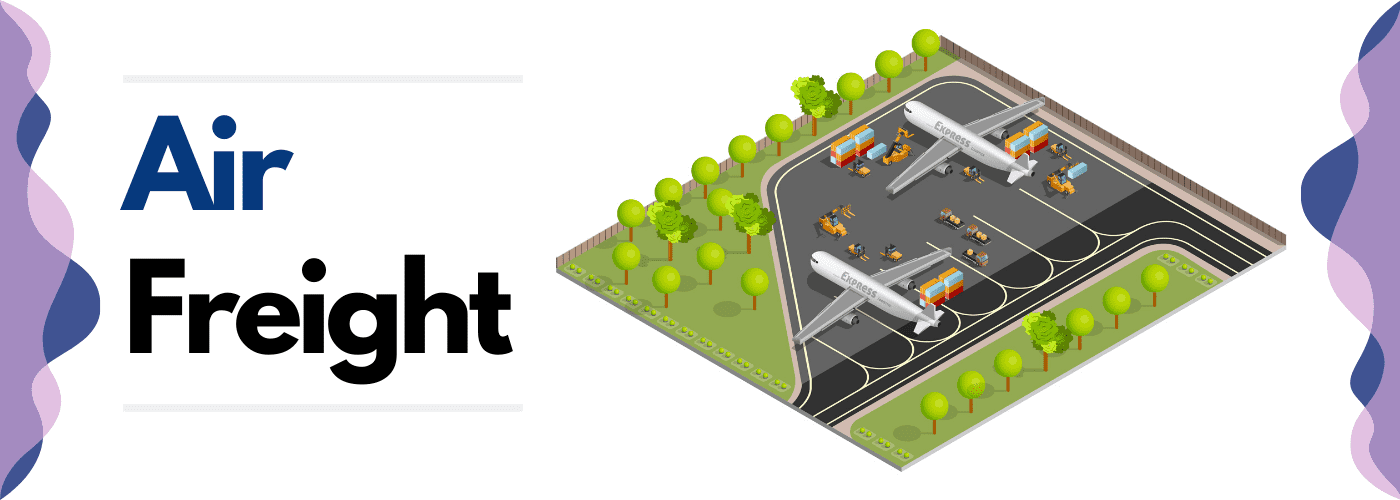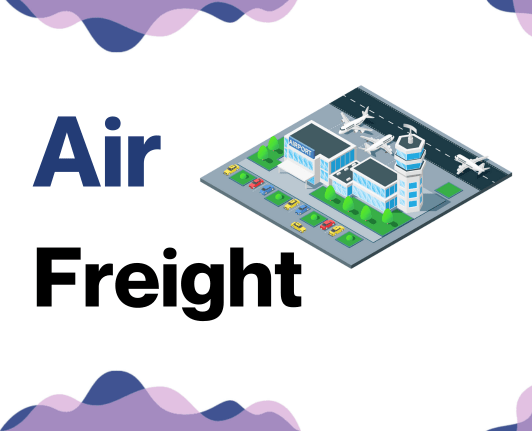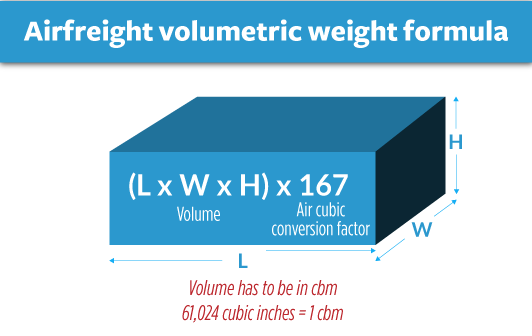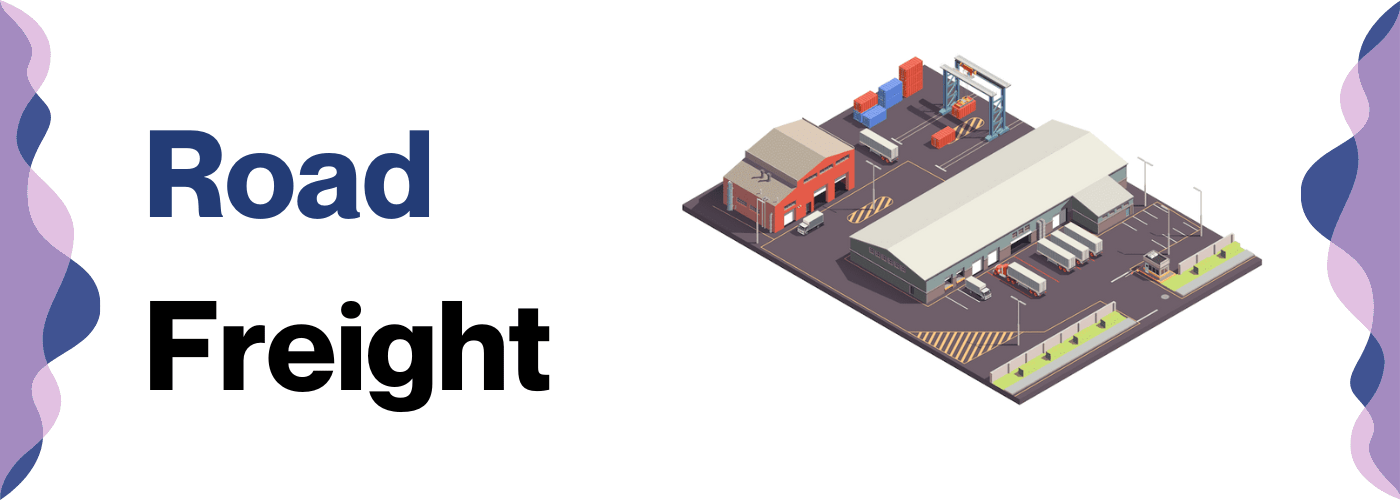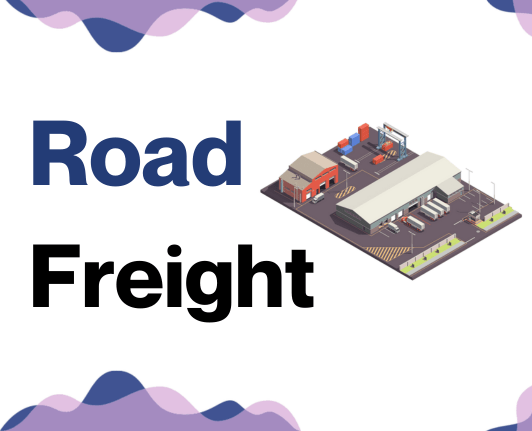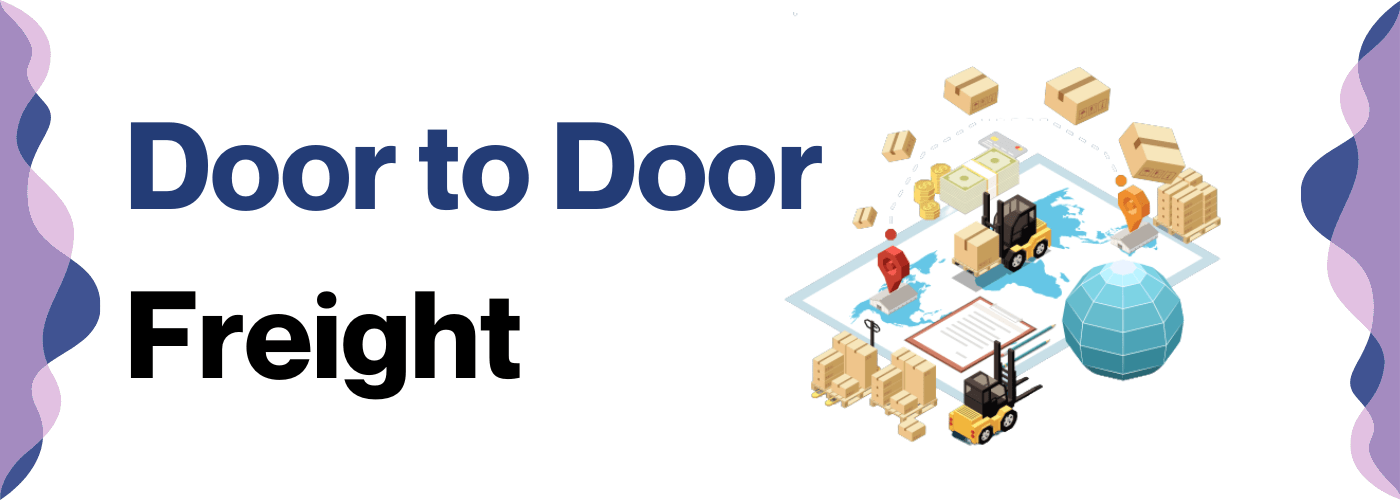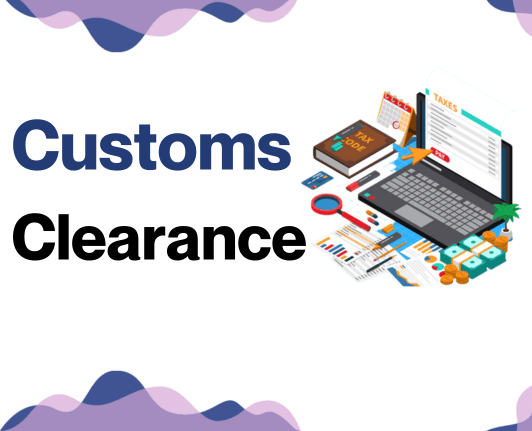Ever tried to juggle herring? Shipping from the UK to Sweden can sometimes feel like that! Unraveling the maze of rates, transit times, and customs regulations can truly test one's patience. In this guide, we delve deep into various freight options, clearing the fog surrounding customs, duties, and taxes, to provide detailed insights particularly beneficial for businesses.
Expect to find advice on everything from sea freight to air, road, and rail transport, tailored to enable smooth sailing on your shipping journey. If the process still feels overwhelming, let DocShipper handle it for you! With our comprehensive services, we caringly convert each intricate step of the shipping process into success, simplifying your freight concerns from the UK to the heart of Sweden.
Table of Contents
Which are the different modes of transportation between UK and Sweden?
Choosing the best transport mode from UK to Sweden is like a game of chess, carefully considering every move. Far from an insurmountable challenge, it's a matter of scene-setting. Think about the strategic placement of UK and Sweden in Europe, peppered with water bodies and landmass.
Long distance? Air freight is your ace. Sea freight, like a slow but steady rook, works well too. If speed isn't a priority, it's the king. And rail or road transport? They're your knights, making unexpected moves across the European mainland, provided documents are in check. Your best move depends on cargo size, budget, and urgency. Now, ponder your next move!
How can DocShipper help?
Shipping between the UK and Sweden can seem complex, but not with DocShipper. Save time, money and hassle by letting our experts handle the logistics, from organizing transport to customs clearance. Want to know more? Get a free estimate in less than 24 hours, or simply call our friendly consultants. We’re always here to help you.
DocShipper Tip: Ocean freight might be the best solution for you if:
- You're dealing with large quantities or oversized items. Sea freight offers a budget-friendly way to maximize space, a particularly useful option given the UK's extensive port network.
- Your shipment isn't on a tight schedule. Ocean transport typically takes longer than air or rail, but it offers reliability.
- Your supply chain involves key ports, allowing you to take advantage of a wide-reaching network of sea lanes.
Sea freight between UK and Sweden
Trading goods between the UK and Sweden through ocean freight offers a cost-effective method for delivering high-volume shipment. Vital linkages such as the Port of Gothenburg, Sweden's largest cargo port, and the Port of Felixstowe in the UK streamline the transport chain, supporting prominent industrial sectors like automotive components, retail products, and electronics.
However, the logistics of sea transport can be tricky. It’s easy to tumble into pitfalls, from handling customs protocols to managing schedules and cargo details. Overlooking minor elements can lead to significant delays and cost surges. But don't worry about navigating these choppy waters alone.
This section brings you an exclusive toolkit packed with the best practices to ace your shipping duties. You'll learn how to prepare documents, ensure timely delivery, and avoid expensive misconceptions, making the ocean freight process between the UK and Sweden smoother and more effective. Absolutely the help you need to wave goodbye to shipping woes.
Main shipping ports in UK
Port of London
Location and Volume: Situated on the Thames River, this port is essential for connecting England with Western Europe and beyond, boasting a shipping volume of 53 million tonnes per year.
Key Trading Partners and Strategic Importance: The Port of London is a gateway to major markets in Germany, Belgium, and the Netherlands. It is also one of the UK's busiest ports, playing a crucial role in the British economy.
Context for Businesses: If you are planning to expand your business into Europe, particularly in the Western countries, the Port of London could be a key part of your shipping strategy given its large volume and central location.
Port of Southampton
Location and Volume: Located in the south of England, this port is known as UK's number one vehicle handling port, with a shipping volume of over 1.5 million TEU annually.
Key Trading Partners and Strategic Importance: The Port of Southampton primarily trades with India, China, and the US, contributing substantially to the UK's economy.
Context for Businesses: If the expansion of your goods involves countries in Asia or North America, the Southampton port's connections might make it an ideal logistical consideration due to its strategic trading partners.
Port of Liverpool
Location and Volume: Positioned on the northwest coast of England, the Port of Liverpool serves as a critical connection to America and the Irish Sea, handling more than 32 million tonnes of cargo.
Key Trading Partners and Strategic Importance: The Port of Liverpool's main trading partners include the United States, Spain, and China.
Context for Businesses: If you're geared towards exporting to North America or Western Europe, the Port of Liverpool's routes can be advantageous due to its premium access to these markets.
Port of Felixstowe
Location and Volume: Located on the east coast of England, the Port of Felixstowe deals with over 3.8 million TEU annually, making it one of Britain's busiest ports.
Key Trading Partners and Strategic Importance: It serves as a principal gateway to European markets, including Germany and Belgium.
Context for Businesses: If mainland Europe is your primary market, the Port of Felixstowe's extensive network to Europe might be particularly relevant to your distribution plan.
Port of Dover
Location and Volume: Situated on the southeast coast of England, this is Europe's busiest ferry port, with an annual shipping volume of up to 5.4 million TEU.
Key Trading Partners and Strategic Importance: The Port of Dover primarily focuses on trade with France and Belgium.
Context for Businesses: If you're thinking of capitalizing on cross-channel trade, Dover's unrivaled ferry services would make it a key part of your logistics strategy.
Port of Grimsby
Location and Volume: Located on England's northeastern coast, Grimsby is one of UK's leading ports for car imports, handling over 500,000 vehicles and 5 million tonnes of cargo annually.
Key Trading Partners and Strategic Importance: Major trading partners include Germany and Scandinavia, focusing on the import of vehicles.
Context for Businesses: If your operations involve large amounts of vehicle import or export, Grimsby's expertise and links could make it a strong choice for your shipping plans.
Main shipping ports in Sweden
Port of Gothenburg
Location and Volume: Situated on the west coast of Sweden, the Port of Gothenburg is the largest port in the Nordic countries. It handles nearly 40.2 million tons of cargo annually, which is around 60% of the entire country's total shipping volume.
Key Trading Partners and Strategic Importance: This port has an extensive international reach including strong business relationships with major global ports in Asia, Europe, and North America. Strategically, it's vital due to its direct access to Sweden's railway network and excellent hinterland connectivity, enabling seamless cargo movement.
Context for Businesses: If your business wants to penetrate the European market, especially the Nordic regions, incorporating the Port of Gothenburg in your shipment routing could be advantageous because of its high-volume throughput and excellent intermodal connections.
Port of Stockholm
Location and Volume: Located on Sweden's east coast, the Port of Stockholm is the second-largest port in Sweden. With its three harbors Stockholm, Kapellskär, and Nynäshamn, it handles about 8.8 million tons of cargo each year.
Key Trading Partners and Strategic Importance: It has a widespread ship route network with connections to over 100 destinations worldwide. Moreover, it is particularly strategic as it is integrated with other means of transport and city infrastructure, making the movement of goods smooth and cost-efficient.
Context for Businesses: Should your strategy involve balancing cost and efficiency, leveraging the Port of Stockholm's expansive network and integrated infrastructure could offer a well-rounded shipping solution.
Port of Helsingborg
Location and Volume: Occupying a prime position at the narrowest part of the Öresund Strait, the Port of Helsingborg is one of the busiest ports in Sweden, handling about 8.2 million tons of freight each year.
Key Trading Partners and Strategic Importance: The port provides comprehensive harbor services primarily to the Baltic region and Western Europe. Its strategic location on the Öresund Strait allows for faster goods transfers, thus saving time and resources.
Context for Businesses: If your business aims to efficiently reach the Northern European and Baltic markets, the Port of Helsingborg can be a key link in your supply chain, thanks to its fast service options and favorable location.
Port of Malmö
Location and Volume: Based in the city of Malmö, the Port of Malmöhttp://www.malmoport.com/ serves as a vital link for trans-European transport networks, serving around 13 million tons of freight each year.
Key Trading Partners and Strategic Importance: This port plays a crucial role in trade exchange with the Baltic Sea region, Western Europe, and Asia. Its strategic importance comes from providing trimodal transport facilities, including rail, road, and sea.
Context for Businesses: For those seeking effective cross-European shipping, the Port of Malmö's tri-modal transport connectivity can ensure smooth goods transition across different routes.
Please note that besides these ports, Sweden has several other minor ports which might be more suitable depending on the specifics of your shipping needs. You should take into consideration the type of goods you are shipping, your key markets, and the shipping and handling capabilities of each port.
Should I choose FCL or LCL when shipping between UK and Sweden?
Understanding whether to use Full Container Load (FCL) or Less than Container Load (LCL), known as consolidation, is pivotal when shipping between the UK and Sweden. Making this choice can influence your shipping cost, delivery timescales, and the overall success of your shipment. These options provide unique benefits that cater to varying needs. So, which one makes the most sense for your business? Are you shipping a smaller quantity or a full load? Let's unpack these options so you can make a confident decision, propelling your operations towards smoother transit.
LCL: Less than Container Load
Definition: LCL (Less than Container Load) shipping is a type of ocean freight where your cargo doesn't fill up an entire container, allowing you to share the space with others. This makes it a cost-efficient and flexible option, especially for smaller shipments.
When to Use: You'll typically use LCL shipment if your cargo is between 1 and 14 CBM (Cubic Metres). It's a practical choice for businesses that don't require an entire standard 20-foot container, providing the flexibility for more frequent, but smaller shipments.
Example: Let's say you're a bookseller in the UK and need to send 500 books to various retailers in Sweden. This won't fill an entire container. Instead, opting for LCL freight lets you share container space with other businesses, keeping costs manageable while still efficiently meeting your distribution needs.
Cost Implications: By sharing container space, you're also splitting the cost with other shippers. Therefore, LCL can be significantly more economical for smaller shipments. However, it's important to note that your goods might be subject to additional handling during the deconsolidation process, potentially leading to slightly higher handling charges than FCL. But, overall, LCL tends to offer the best value for smaller, less bulky shipments.
FCL: Full Container Load
Definition: FCL (Full Container Load) shipping is an option where an entire container is used for a single shipment. Often preferred for high-volume consignments, it provides a cost-effective and secure cargo transportation option.
When to Use: FCL is suitable when your cargo occupies more than 13/14/15 CBM. Since you're securing a full container (20'ft or 40'ft) for your shipment, it optimizes the cost and ensures better safety as the container remains sealed from origin to destination.
Example: If a UK-based furniture business ships whole living room sets to Sweden, choosing FCL is practical. It's cost-effective for high volume, keeps items from different suppliers separate, and provides robust protection for delicate items.
Cost Implications: The fcl shipping quote depends on factors like distance, container size, and type of goods. But because the price is for the whole fcl container rather than individual cargo slots, the cost per unit can be significantly lower for large shipments. This implies decreased transportation costs for your business when shipping high-volume products.
Unlock hassle-free shipping
Decoding the complexity of cargo shipping, DocShipper is your trusty freight forwarder, dedicated to making business easier. Our ocean freight experts meticulously scrutinize variables including the scale of your shipment, budget, destination specifics, and delivery timeframes. We guide you through consolidation loads or full container loads to streamline your UK-Sweden shipping needs. Don't let cargo shipping overwhelm you. Tap into DocShipper expertise today and request a free cost estimation!
How long does sea freight take between UK and Sweden?
Sea freight between the UK and Sweden takes an average of 4 to 7 days – but remember, this time frame can vary. Numerous factors like the exact ports in use, the weight of your shipment and the type of goods all affect this duration. For a customized estimate that considers all these variables, contact a comprehensive freight forwarder like DocShipper.
How much does it cost to ship a container between UK and Sweden?
Determining an exact figure for shipping a container from the UK to Sweden can be challenging considering the various factors involved. Rates fluctuate depending on the Point of Loading, Point of Destination, the specific carrier used, the nature of the goods, and also monthly market variations. Ocean freight rates, for example, could range vastly per CBM (Cubic Meter).
Nonetheless, rest assured, our shipping specialists excel at navigating these complexities. They're adept at working with you to pin down the most cost-effective and efficient shipping solution. We quote on a case-by-case basis, maximizing value for your each distinct shipping need. Let's demystify the shipping cost together.
Special transportation services
Out of Gauge (OOG) Container
Definition: An OOG container is a special shipping container that's designed for Out of gauge cargo, items that cannot fit within the standard dimensions of a regular shipping container due to their size or weight.
Suitable for: If your business deals with large items like construction equipment, machinery, or oversized pallets, OOG containers are an ideal solution.
Examples: One example might be shipping an oversized factory machine from the UK to Sweden.
Why it might be the best choice for you: OOG containers offer the flexibility of transporting oversized goods that couldn't be accommodated by regular containers, thus ensuring your business requirements are met with utmost precision.
Break Bulk
Definition: The break bulk method involves shipping goods separately as a loose cargo load instead of containerized freight.
Suitable for: It's specifically designed for goods that are not container-friendly due to their size, shape, or quantity.
Examples: If your business produces oversized construction materials like girders or beams, break bulk is an excellent option.
Why it might be the best choice for you: Break bulk allows carrying of oversized, heavy or oddly-shaped items that cannot be accommodated by standard containers, providing versatility for your shipping needs.
Dry Bulk
Definition: Dry bulk involves the transportation of homogenous bulk goods such as grain, coal, and ore, that are packed directly into the vessel's hold.
Suitable for: If your business specializes in the export of granulated products, dry bulk is the perfect fit.
Examples: A company exporting large quantities of wood pellets from UK to Sweden would benefit from dry bulk shipping.
Why it might be the best choice for you: Dry bulk shipping can handle large quantities of loose materials, making it efficient and cost-effective for your business if you're moving homogeneous materials in high volumes.
Roll-on/Roll-off (Ro-Ro)
Definition: The Roll-on/Roll-off method, often referred to as ro-ro shipping, involves vehicles or machinery that are driven on and off the ro-ro vessel.
Suitable for: It is primarily used for shipping cars, trucks, tractors, trailers, and railroad cars.
Examples: For example, an automobile manufacturer shipping new vehicles from the UK to Sweden would use Ro-Ro shipping.
Why it might be the best choice for you: Ro-Ro is the most efficient and secure method for transporting self-propelled or towable machinery and vehicles.
Reefer Containers
Definition: Reefer Containers are temperature-controlled containers used to transport perishable goods that require specific temperature conditions.
Suitable for: If your business deals with perishable goods such as fruits, vegetables, meat or pharmaceuticals, reefer containers are your ideal choice.
Examples: For instance, a pharmaceutical company needing to ship vaccines from the UK to Sweden would opt for reefer containers.
Why it might be the best choice for you: Reefer containers ensure that your temperature-sensitive goods are kept at optimal conditions during transit, preserving their quality and value.
Sea freight offers numerous shipping options designed to meet your specific business needs. To determine which method best suits your cargo for shipping between the UK and Sweden, DocShipper is here to assist. We invite you to contact us for a free shipping quote within less than 24 hours.
DocShipper Tip: Air freight might be the best solution for you if:
- You're facing tight deadlines or need rapid delivery. Air freight is your quickest option, which aligns well with the fast-paced business environment.
- Your shipment is relatively small, under 2 CBM. Air freight is ideal for these more compact loads.
- Your cargo's destination isn't easily reached via sea or rail. This makes air freight a viable option, especially given the extensive network of airports available.
Air freight between UK and Sweden
In the hustle of international trade, shipping your goods via air freight from the UK to Sweden offers nimbleness and dependability. It’s similar to delivering a precious, handmade gift to a loved one in a heartbeat; quick, seamless, and worthwhile for smaller items that hold hefty value. Fine jewelry, electronics, or vital documents speed across skies, arriving swiftly and securely. It’s like the express courier of global trade!
However, imagine you're hoping to sprint, unaware you're wearing diving weights; that's exactly how uninformed choices can pull down shippers. Poor estimations of cargo weight, and overlooking key best practices can inflate costs, pushing your freight from a purposeful sprint to a heavy plod. Stay tuned as we unravel these critical nuances in the upcoming section.
Air Cargo vs Express Air Freight: How should I ship?
Air cargo or express air freight - the million-dollar question for UK to Sweden shipments, isn't it? Here's the gist - air cargo gets you a cozy seat in a passenger airline for your goods, while express air freight books your goods an entire dedicated plane. Let's delve deeper and figure out which one is your sweet spot, based on your business needs and the urgency of your shipment. It's all about balancing cost and convenience, right?
Should I choose Air Cargo between UK and Sweden?
Air cargo can be an affordable and trustworthy option for shipping goods between the UK and Sweden, especially when your freight weighs over 100/150 kg. Key players, such as British Airways and SAS Scandinavian Airlines, are known for their reliability. Although air transport can potentially have longer transit times due to its fixed schedule, the consistency often outweighs this factor. By going this route, you'll likely find a balance between budget and dependable freight service.
Should I choose Express Air Freight between UK and Sweden?
Opting for express air freight - a specialized service using cargo-only planes - can be a savvy move, especially when shipping between UK and Sweden. Ideal for consignments under 1 CBM or roughly between 100/150 kg (220/330 lbs), its speed and reliability often outweigh its higher cost. Companies such as FedEx, UPS, or DHL are couriers you possibly recognize, renowned for their global express services. If quick delivery and efficient tracking are high on your priority list, this option could be the perfect fit for your shipment.
Main international airports in UK
Heathrow Airport
Cargo Volume: Heathrow is the largest cargo airport in the country, handling over 1.2 million tonnes of cargo annually.
Key Trading Partners: Key partnerships include countries like the USA, China, and Germany.
Strategic Importance: Located in London, it's a globally significant hub and a vital air freight doorway in and out of the UK.
Notable Features: Has a dedicated cargo area. Unique animal reception center for live animal cargo.
For Your Business: Its large capacity and strategic location offer many freight options. If your business requires quick trans-Atlantic shipping or access to large consumer markets, Heathrow can be an effective choice.
Gatwick Airport
Cargo Volume: On an annual basis, Gatwick handles over 96,000 tonnes of cargo.
Key Trading Partners: The USA, Ireland, and Dubai are significant partners.
Strategic Importance: It's the second-largest international airport in the country, serving as another essential entry and exit point for freight.
Notable Features: Gatwick has excellent road connections to all major UK cities.
For Your Business: If your business trades primarily with the aforementioned partners, Gatwick’s freight services can provide efficient and timely shipping solutions.
Manchester Airport
Cargo Volume: Annually, Manchester processes over 120,000 tonnes of cargo.
Key Trading Partners: Prominent partners include the USA, Asia, and the Middle East.
Strategic Importance: As the third-largest airport in the UK, Manchester plays a critical role in freight transport in the North of England.
Notable Features: Provides a specialist cargo-handling service.
For Your Business: Its central location within the UK can assist with speedy domestic distribution. If regional access in the North of England is important for your business, consider Manchester Airport.
Stansted Airport
Cargo Volume: Handles over 250,000 tonnes of cargo yearly.
Key Trading Partners: Mainly trades with the European Union, Turkey, and Hong Kong.
Strategic Importance: Stansted is London's third major airport and is home to several cargo-dedicated airlines making it a crucial freight hub.
Notable Features: Houses the 367,000 sq ft East Midlands Gateway logistics park.
For Your Business: Stansted's focus on cargo airlines can ensure more direct international shipping routes, particularly for European trade.
East Midlands Airport
Cargo Volume: Manages over 360,000 tonnes of flown cargo each year.
Key Trading Partners: Europe, Asia, and North America are substantial partners.
Strategic Importance: It's the UK’s most significant pure cargo airport, handling 30% of all UK air cargo.
Notable Features: Houses a number of global courier companies, including Royal Mail, DHL, and UPS.
For Your Business: If your business requires comprehensive delivery services within the UK and to international markets, East Midlands Airport, with its robust courier and freight network, is worth considering.
Main international airports in Sweden
Stockholm Arlanda Airport
Cargo Volume: 96,500 tonnes.
Key Trading Partners: USA, China, Germany, UK, and Holland.
Strategic Importance: As Sweden's largest airport located in the capital city, Arlanda connects Sweden to more than 180 destinations worldwide.
Notable Features: With two well-equipped cargo terminals, Arlanda can handle a variety of goods, including perishable products, and offers special solutions for specific cargo such as animals or oversized items.
For Your Business: With reliable connections to key trade partners and specialized cargo handling capabilities, Arlanda can ensure safe, efficient transit for your goods whether they're standard shipments or need special attention.
Göteborg Landvetter Airport
Cargo Volume: Around 60,100 tonnes.
Key Trading Partners: UK, Norway, Denmark, Finland, and China.
Strategic Importance: As the second-largest airport in Sweden, Landvetter provides a significant gateway to the world and is adjacent to major transport routes for seamless ground connections.
Notable Features: Its dedicated cargo center has a strong focus on e-commerce, making it well-equipped for handling a large quantity of small parcels.
For Your Business: With a strong network coverage and an emphasis on modern e-commerce logistics, Landvetter could be the answer if your business depends on timely delivery of smaller shipments.
Malmö Airport
Cargo Volume: Around 24,000 tonnes.
Key Trading Partners: Denmark, Germany, France, Japan, and USA.
Strategic Importance: Malmö Airport provides vital cargo links to Southern Europe and the Middle East and is situated in a region with significant manufacturing and trade activities.
Notable Features: The airport features a dedicated cargo center, providing flexible and reliable solutions for diverse needs.
For Your Business: If your goods are destined for southern markets or you're based in the south of Sweden, Malmö Airport could offer an efficient, streamlined shipping route.
Umeå Airport
Cargo Volume: 2,240 tonnes.
Key Trading Partners: Germany, UK, Denmark, Norway, and Finland.
Strategic Importance: Umeå Airport is a crucial link to Scandinavia and hosts flights to several international destinations.
Notable Features: Efficient handling services for a range of cargo, from general merchandise to perishable goods.
For Your Business: If Northern Europe, Scandinavia, and the Baltic countries are your target markets, using Umeå Airport as a hub can streamline your logistics.
Luleå Airport
Cargo Volume: 1,553 tonnes.
Key Trading Partners: Norway, Denmark, Finland, Germany and UK.
Strategic Importance: As the northernmost airport in Sweden, Luleå offers critical transport links to the Arctic region and broader Scandinavia.
Notable Features: The airport maintains a 24h open cargo terminal, ensuring the flexibility necessary for time-sensitive shipments.
For Your Business: If your business targets the Arctic region, Scandinavia, or demands versatile cargo handling around the clock, Luleå Airport might be the right choice for you.
How long does air freight take between UK and Sweden?
Shipping between the UK and Sweden by air freight typically takes between 1 to 3 days. However, these transit times can vary considerably depending on the specific departure and arrival airports, the weight of your shipment, and the type of goods being transported. For the most precise and up-to-date transit times, we highly recommend consulting with a specialist freight forwarder like DocShipper.
How much does it cost to ship a parcel between UK and Sweden with air freight?
Air freight shipping rates between the UK and Sweden can average between £2.5 and £4.5 per kg. However, determining an exact cost is rarely straightforward given the influence of variables such as distance from departure and arrival airports, parcel dimensions, weight, and type of goods. Rest assured, our team throws the guesswork out the door by offering bespoke quotes specific to each shipment's parameters. This way, we ensure that you receive the most advantageous rates. Never fret about logistics again. Contact us to receive a free and concise quote in less than 24 hours.
What is the difference between volumetric and gross weight?
Gross weight refers to the total weight of your shipment, including the goods and packaging. Volumetric weight, on the other hand, considers the space your shipment will occupy in the aircraft.
To calculate the gross weight in air freight shipping, simply weigh everything that will be shipped, including the packaging. For instance, if you're shipping five boxes, each weighing 10 kg, your gross weight is 50 kg (or about 110 lbs).
Calculating volumetric weight for Air cargo uses the formula: Length x Width x Height (in cm) / 6000 = Volumetric weight (in kg). Suppose those five boxes each measure 40cm by 30cm by 50cm. The volumetric weight of your shipment would be: 40 x 30 x 50 / 6000 = 10 kg per box, and 50 kg total for all boxes (or approximately 110 lbs).
In Express Air Freight services, the divisor in the formula is typically 5000 rather than 6000. So, the volumetric weight of the same boxes would be: 40 x 30 x 50 / 5000 = 12 kg per box, and a total of 60 kg (or approximately 132 lbs).
Here's why this is key: shipping charges are not just based on weight, but also on how much space your shipment occupies in the aircraft. If the volumetric weight is higher than the gross weight, the shipping cost will be based on the volumetric weight, and vice versa. It helps to understand both weights to accurately anticipate your freight expenses.
DocShipper tip: Road freight might be the best solution for you if:
- You're seeking a budget-friendly solution for shorter hauls. Road freight often comes out on top in terms of cost-effectiveness and speed for these kinds of distances.
- Your end destination is either within your own continent or just across the border. For such regional or intra-continental shipments, road freight is typically the most direct and rapid method.
- Your cargo has unique dimensions or shapes. The adaptability of trucking allows for a wide range of goods that may not conform to the size limitations of sea or air transport.
Trucking between UK and Sweden
Navigating the bustling roads from the UK to Sweden can be a smooth sail with the right trucking service. This notorious route offers cost-effectiveness and efficiency, with transit times often quicker than sea and rail freight. Companies stand to benefit from the impeccable road conditions, making goods transit secure and reliable.
When compared to air shipment, road freight offers a tremendously budget-friendly option. However, be prepared for changes in weather, which could occasionally hamper your schedule. Yet for businesses prioritizing budget and time, say hej då (goodbye in Swedish) to complications with cross border shipping via road, an advantageous choice indeed.
What if I can’t fill a truck between UK and Sweden?
Choosing between Less Than Truckload (LTL) and Full Truckload (FTL) shipments can greatly impact your business's shipping efficiency and bottom-line. This part of our guide is essential for those making regular freight deliveries from the UK to Sweden, as it breaks down the pros, cons, and cost implications of both options. Make more informed decisions and unlock cost-effective solutions with this critical knowledge.
LTL: Less than Truck Load
LTL or Less Than Truck Load is a shipping method where your cargo isn't big enough to take up a whole truck. Picture it like carpooling, but for your freight, sharing space with goods from other companies to make the most out of the journey. It's called 'Less Than Truck Load' and is perfect when your cargo measures less than 13/14/15 CBM.
Suppose you're a furniture business in the UK sending three couches to Sweden, each measuring approximately 4 CBM. That's only 12 CBM in total - a tad too small for a full truck. LTL freight becomes the smart choice here, letting you save costs and reduce carbon footprint by sharing the vehicle with other shippers.
Consider going LTL for scenarios like:
- You've small quantities to ship
- Your cargo isn't time-sensitive
- The goods aren't fragile and can withstand handling between trucks
- You aim to cut down on transport costs
Now, are you ready to take advantage of LTL shipment between the UK and Sweden? It's a cost-effective, environmentally friendly choice when your cargo size is just right!
FTL: Full Truck Load
Full Truck Load or FTL freight is a transportation method that allows you to take full advantage of a truck's space - typically more than 15 CBM - for your cargo. This option makes perfect sense if you have bulk cargo to ship from the UK to Sweden. For instance, suppose you're transporting furniture that fills up 17 CBM of space. In this case, an FTL shipment would be your best bet to ensure the efficient and secure handling of your cargo.
To aid your decision-making process, here are few scenarios where you should use FTL:
1. When you have considerable amounts of cargo - typically greater than 15 CBM.
2. If you're shipping high-value goods, as FTL offers reduced risk of damage.
3. In case you need faster deliveries, FTL shipping generally saves time.
4. When your cargo requires special handling during the transit.
5. If your cargo needs to remain in a climate-controlled environment.
Remember, determining whether to use FTL largely depends upon the size of your freight. Selecting the correct transportation mode significantly impacts both cost efficiency and cargo safety. If your freight ticks any of these conditions, choosing FTL might just be what your business needs.
What are the main routes between UK and Sweden?
The key artery for road freight between the UK and Sweden is the E4 Highway, stretching from Helsingborg in Southern Sweden to Haparanda at the Finnish border, as well as the E20 between Gothenburg and Stockholm. Freights coming from the UK usually enter Sweden via Malmö, connected by the E20. The major cities along these routes include Jönköping, Linköping, and Norrköping.
Keep an eye on restrictive factors like seasonal weather conditions and transport protocols impacting journey times. Additionally, given Sweden's stringent environmental rules, ensuring your vehicle complies with emission standards is crucial.
What are the road transit times between UK and Sweden?
Covering a distance of approximately 1,400 kilometers, the usual road transport time between the UK and Sweden is around 24 to 48 hours. However, it's important to note that this period can significantly vary due to unpredictable traffic conditions and road qualities. For example, inclement weather or roadworks can contribute to delays. Remember, these are rough estimates; if you require more precise timings, our team can provide a cross-border freight quote within 24 hours.
How much does trucking cost between UK and Sweden?
Ever scratched your head over the price to truck goods from the UK to Sweden? Well, with factors like load size, cargo type, and transport distance, quoting an exact price isn't a bed of roses. But don't sweat it! Our team loves a good challenge and is on hand to rustle up the best possible rates tailored to your specific circumstances. Because let's face it, cookie-cutter solutions just don't cut it in freight forwarding. So let's team up and make some shipping magic happen!
DocShipper tip: Door to Door might be the best solution for you if:
- You prioritize ease and a hassle-free shipping experience. Door-to-door services manage the entire process, from collection to final delivery.
- You appreciate the efficiency of having one dedicated contact. With door-to-door, a single agent is responsible for overseeing all elements of your shipment.
- You want to limit the number of times your cargo is transferred. Door-to-door services minimize the switches between various transport methods, lowering the chances of damage or loss.
Door to door between UK and Sweden
Unpacking international 'Door to Door' shipping, it's simple: We collect from your location and deliver right to your Swedish recipient's doorstep! This turns complex logistics into a breeze, especially when shipping between the UK and Sweden. Offering unparalleled convenience and saving precious time, it's a top pick for businesses. Ready to unravel how it can help you streamline your shipping process? Let's dive in!
Overview – Door to Door
Struggling with the shipping process from the UK to Sweden? Door to Door service offers a stress-free solution by managing the entire logistic journey. This highly sought-after service from DocShipper clients tackles complex customs clearance, transport organisation, and administrative procedures, turning challenges into smooth sailing. Despite being costlier, its hassle-free nature keeps it ahead in the competition. In fact, the convenience it offers is unparalleled, making your shipping experience seamless. Remember, you not only save time, but you also gain peace of mind!
Why should I use a Door to Door service between UK and Sweden?
Fed up with playing pass-the-parcel with your precious cargo? Consider the total convenience of Door to Door shipping from the UK to Sweden! Here are five convincing reasons to give your logistics a facelift:
1. No Hassle, Just Hustle: With Door to Door service, your goods are picked up directly from your location and delivered to the destination. Wave goodbye to the headache of coordinating multiple shipping services.
2. A Race Against Time: Urgent shipment? No problem! Door to Door knows the importance of each tick of the clock, ensuring swift and efficient transport to swiftly get your consignment from A to B.
3. Complex Cargo, Simplified: If handling fragile, oversized, or tricky cargo feels like a game of Tetris you never win, this service is your solution. Specialized handling of your complex cargo ensures your goods receive the TLC they deserve.
4. Trucking to the Finish Line: Freight is handled continuously throughout the journey. From initial pickup to the final trucking to the destination, it’s all sorted, ensuring a seamless journey void of unnecessary detours.
5. Sail Through Customs: Jargon-filled customs documents can feel like an alien language! Embrace Door to Door for professional assistance with customs clearance and sail through those tricky goods declarations.
So, why juggle logistics when you can entrust it all to a Door to Door service? Adapt this ship-shape solution and make your UK to Sweden shipping a breeze!
DocShipper – Door to Door specialist between UK and Sweden
Stress-free shipping from the UK to Sweden is possible with DocShipper handling every step from A-Z. Our skilled team takes care of packing and transporting your goods, smoothly navigating through customs via any shipping method. Plus, a dedicated Account Executive is just a call away to assist you. Relax, we’ve got it all under control. Reach out for a free estimate in less than 24 hours, or connect with our consultants for free advice. Fast, efficient, and hassle-free. Trust DocShipper to deliver!
Customs clearance in Sweden for goods imported from UK
Customs clearance - a mandatory procedure for goods moving from the UK to Sweden. Navigating this labyrinth of duties, taxes, quotas, and licenses can be daunting and, without careful management, may lead to unexpected fees or your goods being detained at the border. It's about dotting the i's, crossing the t’s and recognizing potential pitfalls before they cause problems. This clarity could mean the difference between smooth sailing and a logistical nightmare.
But don’t worry! In the following sections, we’ll dive into every detail, making things crystal clear. Plus, DocShipper is here to help! Contact us with your goods' origin, value, and HS Code to leverage our global expertise for precise costing. Shipping was never this simple!
How to calculate duties & taxes when importing from UK to Sweden?
Understanding how to estimate duties and taxes when importing goods from the UK to Sweden involves a few key steps that revolve around crucial data. Here's what you need to know: customs duties are determined by factors including the country of origin, the Harmonized System (HS) Code of the goods, their customs value, and the applicable tariff rate, along with any additional taxes or fees that may apply to your specific products.
The first step of the process is pinpointing the country where the goods were manufactured or produced. Why this matters? The origin of your goods plays a significant role in the calculation of duties, due to international trade agreements and other geopolitical factors, which can affect the tariff rates. So, it's not always about where you're shipping from, but rather where the product was made. Crack this, and you've made the first successful stride in your importing journey from the UK to Sweden.
Step 1 - Identify the Country of Origin
Knowing the Country of Origin isn't just box-ticking — it's the launchpad for your entire shipping operation.
1. Trade Agreement: UK-Sweden trade runs under the UK-EU Trade and Cooperation Agreement, which can lead to preferential treatments like lower taxes. Origin is key to ripening these benefits.
2. Import Restrictions: Some products may face restrictions or require certification depending on their origin.
3. Countervailing Duties: If a product from the UK has trade subsidies, additional duties could apply to offset them.
4. Anti-Dumping: Origin helps identify if the goods are sold below market price to ward off competition — a no-no in international trade.
5. Tariff Shift: Changing components with a non-UK object can alter the product's origin and its duties.
Advice? Stay updated. Both nations keep altering their trade regulations based on geopolitics, so regular reviews should be on your agenda. Remember, the right declaration of origin helps paint a clear picture to the Customs Authority, boosting your business's credibility and speeding your shipping processes. And, when in doubt, seek expert help!
Step 2 - Find the HS Code of your product
The Harmonized System Code (HS Code), is a standardized coding system used worldwide to classify products. It is essential for correctly declaring imports or exports to customs as it determines the rates of duties and tariffs you need to pay, among other import-export requirements.
When it comes to finding the HS Code for your products, your supplier is usually the easiest and most reliable source. They're typically well-versed in the regulatory specifics of the goods they provide and can provide the correct HS Code.
However, in cases where asking the supplier is not feasible, you can use an HS lookup tool to find out. One such tool is the Harmonized Tariff Schedule. It allows you to search for your product and find its respective governing HS Code.
To start, input the name of your product in the search bar, then look for the 'Heading/Subheading' column. This is where you'll find the HS Code for your product.
Please take note: Accuracy is crucial when selecting the HS Code. Any errors can lead to delays in shipping, and even monetary penalties. This level of precision ensures your goods are shipped smoothly, avoiding any hold-ups, and potential fines due to inaccuracies.
Here's an infographic showing you how to read an HS code.
Step 3 - Calculate the Customs Value
Understanding the notion of 'Customs Value' can seem tricky, but it's a crucial part of your shipment process to Sweden from the UK. Think of it as the complete economic footprint of your goods entering a new country. It's different from the product value as it isn't just the price paid for the goods. It's the CIF value; a sum of the cost of the goods, cost of international shipping (freight), and insurance cost, all in USD.
For instance, if your product costs $100, the shipping fee is $20, and the insurance is $10, the customs value is $130. This comprehensive value is what the customs authority bases their duty calculation on. Your savvy tracking of these costs can lead to smoother, surprise-free shipments.
Step 4 - Figure out the applicable Import Tariff
Import tariffs, often referred to as customs duties, are the taxes paid on goods imported into a country. In this case, if you're importing goods from the UK into Sweden, you need to determine the applicable import tariff to calculate your total import cost accurately.
For this, you'll use the UK's own Trade Tariff tool. This tool provides detailed information about the tariffs levied on different categories of goods. Here's a step-by-step guide:
1. Access the UK Trade Tariff tool.
2. Enter the Harmonized System (HS) code identified earlier (for instance, if you're importing bicycles, the HS code is 871200).
3. Enter the country of origin.
4. Review the duties and taxes applied to that product.
Consider this practical example: If you're importing bicycles (HS code 871200) from the UK, using an estimated CIF (Cost, Insurance, Freight) amount of $1000, and the tariff rate is 10%, your import tariffs would be calculated as follows:
Import Tariff = 10% of $1000 (CIF)
Import Tariff = $100
In conclusion, understanding and correctly calculating your import tariffs is essential to ensuring smooth and cost-effective shipping, eliminating any unexpected charges and potential delays at customs.
Step 5 - Consider other Import Duties and Taxes
In addition to standard tariffs, your goods may be subject to other fees dependent upon origin and commodity type. For instance, excise duty is levied on goods like alcohol and tobacco. Anti-dumping taxes may apply if your goods are priced below fair market value in the country of origin, a measure designed to protect domestic industries.
But, the most substantial might be the Value Added Tax (VAT). In Sweden, the standard VAT rate is 25%, although reduced rates (12% and 6%) apply for certain goods.
Imagine importing wooden furniture worth $10,000 from the UK to Sweden. Here's a simple breakdown:
1. Standard tariff rate of 2.5% (assuming generic rate): $10,000 0.025 = $250
2. An excise duty of 3% (hypothetical rate): $10,000 0.03 = $300
3. VAT of 25% applied on the total value (cost + tariff + excise): ($10,000 + $250 + $300) 0.25 = $2,637.50
Under this scenario, your final cost would be $13,187.50. Bear in mind, these figures are simply illustrative; rates and charges will fluctuate.
Knowing and accounting for these constituents ahead of time can save unforeseen expenses, so consult your freight forwarder or customs officer for accurate numbers.
Step 6 - Calculate the Customs Duties
In Step 6, you'll learn how to compute customs duties on imports from the UK to Sweden. First, calculate the customs value - this includes the cost of goods, plus transport, insurance, and loading costs. This value is used to determine the customs duty and VAT (Value Added Tax).
Example 1: Imagine goods worth $5000, with a tariff rate of 3%. The customs duty is then $150 (3% of $5000).
Example 2: If we add a VAT of 25%, the total charge will be: $150 (duty) + $1250 (25% of ($5000+$150)) = $1400.
Example 3: For goods subjected to a 10% anti-dumping tax and $200 excise duty, your total fees will be: $150 (duty) + $1375 (25% of ($5000+$150+$500 (anti-dumping tax))) + $200 (excise duty) = $1725.
Navigating these calculations and adhering to international customs laws might seem daunting. That's where DocShipper steps in. We'll handle all aspects of customs clearance across the globe, ensuring you never overpay. Reach out to us today for a free quote within 24 hours.
Does DocShipper charge customs fees?
Often, businesses grapple with confusing dynamics of customs charges. So let's clarify - DocShipper, your custom broker in the UK and Sweden, doesn't levy customs duties. Our purview extends to customs clearance fees but not the customs duties, which are paid directly to the government. When perplexed about varying fees, remember we're dedicated to transparency. We'll give you the official government documents proving you only paid correct duties. It's like shopping with the price tag clearly visible - no hidden costs, just honest transactions.
Contact Details for Customs Authorities
UK Customs
Official name: Her Majesty's Revenue and Customs (HMRC)
Official website: www.gov.uk/government/organisations/hm-revenue-customs
Required documents for customs clearance
Sorting through unfamiliar logistics jargon? Not to worry. Let's demystify essential documents such as the Bill of Lading, Packing List, Certificate of Origin, and Documents of Conformity (CE standard). These play a pivotal role in your journey through the customs clearance maze. A well-prepared set of documents can make your process smooth sailing. Stay tuned!
Bill of Lading
When moving your goods between the UK and Sweden, having an aptly filled out Bill of Lading is non-negotiable. This official document marks the handover of your cargo's responsibility, providing proof that your shipment has been loaded onto the carrier. Thinking air freight? Then an Air Waybill (AWB) is your paper trail. What's exciting is opting for a ‘telex’ or electronic release. It’s quick, efficient, cutting down potential delays waiting for a physical document. But remember, mistakes on these papers can lead to costly customs hold-ups. Always triple-check details and consider expert help. Your shipment's smooth journey counts on it.
Packing List
The Packing List is your inventory ticket when shipping goods between the UK and Sweden. It's the shipper's responsibility to ensure every box and pallet's contents are accurately stated. Think of it as your shipping autobiography – often scrutinized, yet the key to a smooth shipping journey. It lists the volumes, weights, and types of goods, providing customs authorities with the exact ingredient list for your shipment cake.
For instance, if you're shipping furniture from London to Stockholm, your Packing List should accurately describe each item – from teak tables to mahogany chairs. Both sea and air freight require this indispensible document to avoid hiccups at customs. So, brush off any shortcuts and get your Packing List right! It's your first step towards hassle-free transit across the North Sea and above.
Commercial Invoice
A Commercial Invoice is your ticket to smooth shipping from the UK to Sweden. It's more than a receipt; it lays out key details of your shipped goods, including descriptions, quantities, cost, and the receiver's information. Filling it accurately is vital to avoid customs delays. Double-check your product's harmonized codes to ensure proper duty calculation.
And remember, correct incoterms are a must to define who pays for shipping, insurance, and duties. Align this with your other shipping documents to make your goods sail through Swedish customs. It might seem tedious, but it's worth getting right, like threading a needle on the first go. Successfully managing this step can save you from costly hold-ups and bureaucratic headaches.
Certificate of Origin
Navigating the customs waters between the UK and Sweden can seem a daunting task, but the Certificate of Origin is your lifeline. This document, outlining where your goods were manufactured, is a golden ticket to preferential duty rates. Let's say you're shipping artisan chocolates made in Birmingham to a boutique in Stockholm - your Certificate of Origin verifies their UK production.
By identifying the manufacturing origin, customs authorities can correctly apply any preferential trade agreements, resulting in significant savings. However, incorrectly listing the country of manufacture can lead to unnecessary costs. So take a moment to double-check, because it pays to get it right! With a well-prepared Certificate of Origin, you'll make your freight journey from the UK to Sweden as smooth as your finest milk chocolate.
Certificate of Conformity (CE standard)
Shipping goods from the UK to Sweden? Here's an essential you'll need on the paperwork side of things - the Certificate of Conformity (CE standard). This document proves that your goods meet the stringent health, safety, and environmental standards of the European market. It's not about quality assurance, rather, it’s a passport for your goods in the European market.
Remember the CE is akin to the FCC Declaration of Conformity in the US. But alas! Post-Brexit changes mean the UK isn't the land of CE anymore. Now, it's all about the UKCA marking. So, if you're exporting from the UK, consider switching to UKCA - just a useful nugget! Check out the details on this government page. The CE remains pivotal for your Swedish recipients though, ensuring smoother customs clearance.
Your EORI number (Economic Operator Registration Identification)
If you're shipping goods between the UK and Sweden, your EORI Number is critical. Acting like a passport for your cargo, it helps to track your imports and exports. Regardless of whether you're a business or an individual, if you're involved in shipping, you need this number. It's unique to you, like a DNA for your transactions. You can register for an EORI number via the European Union online portal - it's as simple as an internet search away! Remember, despite Brexit, for transactions between the UK and EU countries (like Sweden), your EORI number is still crucial for smooth, efficient shipping operations. Think of it as your key to unlocking international trading doors!
Get Started with DocShipper
Navigating customs can be complex. Breathe easier with DocShipper’s expert services. We'll handle every facet of your UK-Sweden customs clearance. No more paperwork headaches, no more time wasted. A reliable, hassle-free experience awaits. Get in touch now for your free quote - because ease and efficiency shouldn't have to wait. Contact us and get a response in less than 24h. Optimise your cross-border shipping today!
Prohibited and Restricted items when importing into Sweden
Understanding what you can and can't bring into Sweden is crucial to avoid costly delays or penalties. This guide will unpack Sweden's restricted and prohibited items list to keep your shipping smooth and compliant.
Restricted Products
- Alcohol: If you're planning to ship alcohol into Sweden, you'll have to apply for an Excise Duty Exemption Certificate from the Swedish Tax Agency.
- Tobacco Products: For tobacco products, a permit from the Swedish Public Health Agency is mandatory.
- Food Products: Before shipping any food products into Sweden, ensure that you've acquired a permit from the Swedish Food Agency.
- Plants and Seeds: To ship plants or seeds, you should grab a Plant Health Certificate from the Swedish Board of Agriculture.
- Pharmaceuticals: For pharmaceutical items, it's a must to obtain an Authorization of Pharmaceuticals from the Medical Products Agency.
- Precursor Chemicals: Precursor chemicals need a license from the Swedish Police Authority before you think about shipping.
Remember, these permits or licenses are necessary to ensure your shipments are clear to move into Sweden. Running afoul of these rules can lead to serious repercussions, so it's always better to follow the law to the letter.
Prohibited products
- Narcotics and illegal drugs: Any form of illegal drug, including but not limited to cannabis, cocaine, heroin, and new psychoactive substances.
- Offensive weapons: Switchblade knives, butterfly knives, brass knuckles, certain kinds of clubs and many other kinds of weapons.
- Explosives and fireworks: Yes, even though they are legal in many countries, Sweden strictly forbids the unregulated import of any fireworks or explosives.
- Certain animal species or products: This includes several species of animals, as well as their products. Always check CITES regulations and local Swedish law.
- Products containing asbestos: Sweden follows EU regulations, banning the importation of all types of asbestos.
- Unauthorized medicine: Any medicine not approved by the Swedish Medical Products Agency cannot be imported into the country.
- Most wildlife and related products: Importing wildlife, including dead specimens (like antlers or hides), is very tightly controlled.
- Counterfeit goods or pirated items: Sweden has strict laws around copyright and the importing of counterfeit goods is strictly prohibited.
- Radios that can interfere with emergency frequencies: This roll includes two-way radios, HAM radios, and other devices capable of transmitting on unauthorized frequencies.
- Child pornography: Not only is this horrifying, but it's also incredibly illegal. The penalty for being caught with this can be up to 6 years in prison.
- Endangered plants, or animals, or products made from them: Also against international law.
- Certain types of food: Any food that's not prepared in the EEA/EU area, such as certain meats and milk from some countries, is forbidden without specific authorization.
- Invasive plant species: Certain types of plants that could disrupt local ecosystems are not allowed.
- Counterfeit and pirated goods and protected trademarks: Replica or counterfeit merchandise, forged tickets and copyright infringing materials are not allowed.
- Plants and plant products without a phytosanitary certificate: Any plant matter, including seeds, must be accompanied by this certificate when entering Sweden to ensure it doesn't carry pests or diseases.
Are there any trade agreements between UK and Sweden
Yes, the UK and Sweden share business-friendly relations under the broader canopy of the EU trade agreements, even post-Brexit. This existing accord enables easier trade by lowering tariff barriers for businesses, making your shipping process smoother. Keep an eye on the ongoing negotiations of the UK-Sweden bilateral agreement which could offer even more targeted benefits for your freight needs in the future. Regardless, rest assured, your UK-Sweden shipping operations should be in a great position.
UK - Sweden trade and economic relationship
Sweden and the UK share a long-standing, robust trade and economic relationship, historically anchored in the open trade policy. As significant EU partners, both nations have witnessed milestones such as deepening economic integration, fostering substantial increases in cross-border trade. Key sectors, energizing this partnership, include automobiles, pharmaceuticals, technology, and retail.
Interestingly, the UK is Sweden’s 6th largest trading partner, with a total trade value of £26.6 bn in 2023. Similarly, Swedish investment in the UK is vital; in 2018, it made up a whopping £11.6bn. UK investments in Sweden also show a promising trajectory, highlighting the strong interdependent economic ties. This compact yet in-depth glance at the UK-Sweden trade scenario underlines their shared growth journey, indicating potential opportunities for businesses.
Your Next Step with DocShipper
Overwhelmed by cross-border delivery complications? Don't let logistics become a barrier to your UK-Sweden trade goals. With DocShipper, take the stress out of freight forwarding. Enjoy our all-inclusive service - from transportation, customs clearance to handling administrative tasks. Make your next move efficient. Reach out to us and let's make shipping simple!
Additional logistics services
Dig deeper into DocShipper's comprehensive logistics services, from warehousing to distribution. Discover how we streamline your entire supply chain, far beyond just shipping and customs! Let us shoulder the complexities, so you can focus on business growth.
Warehousing and storage
Finding the right warehousing in the UK to Sweden shipping lane can feel like unsteady ground. If you're transporting temperature-sensitive goods, consistent conditions are crucial. For instance, a crate of Swedish lingonberries requires controlled temperatures, otherwise they'd spoil. Take the chill off with our state-of-the-art warehousing solutions offering reliable temperature controls, among other services. Smoother shipping begins here. More info on our dedicated page: Warehousing.
Packaging and repackaging
Understanding the art of packaging and repacking is crucial when shipping between the UK and Sweden. It's more than wrapping your goods; it's about safeguarding your business reputation. Picture high-quality ceramics keenly packaged to withstand long journeys, or efficiently repacking furniture to minimize volume, thereby reducing costs. A trustworthy forwarding agent, like us, can help. Discover more on our dedicated page: Freight packaging.
Cargo insurance
In your shipping journey, think of transport insurance as your safety belt. Unlike fire insurance, which typically covers static properties, transport insurance specifically safeguards your goods during their shipping trajectory. Picture this - your shipment collides with another or drops into the ocean, it's insured! It's about preparing for the unexpected, mitigating risks, and delivering peace of mind. More info on our dedicated page: Cargo Insurance.
Supplier Management (Sourcing)
Shipping to Sweden from the UK and encountering sourcing roadblocks? DocShipper streamlines your sourcing needs with its Supplier Management service. We facilitate finding suppliers in Asia and East Europe, manage the entire procurement process, and help you leap language barriers. Imagine partnering with a clothing manufacturer in Poland – we bridge the communication gap and ensure smooth supply chain operations. Gain detailed insight on our dedicated page: Sourcing services.
Personal effects shipping
Moving cherished items from the UK to Sweden? We understand the anxiety! Our Personal Effects Shipping ensures your precious, bulky or delicate pieces reach the other side in prime condition. Imagine your grand piano delivered intact, right in your new Stockholm living room - that's us! More info on our dedicated page: Shipping Personal Belongings.
Quality Control
Sending goods from the UK to Sweden? Quality control is your ticket to certainty. It's all about detailed inspections during the manufacturing or customization stage, ensuring your products fit the standards of both countries, like AB Volvo ensuring car parts meet Swedish road safety standards before shipping to their UK facilities. Dodge the daunting costs and time drains attached to non-compliant goods. More info on our dedicated page: Quality Inspection.
Product compliance services
Compliance with shipping regulations is key to a smooth journey for your goods. We offer Product Compliance Services to check and verify your merch meets all necessary rules. With robust lab testing, our team gets you the certification you need for hassle-free transports. Avoid barriers and breeze through customs. More info on our dedicated page: Product Compliance Services.
FAQ | Freight Shipping between UK and Sweden | Rates - Transit times - Duties and Taxes
What is the necessary paperwork during shipping between UK and Sweden?
When shipping from the UK to Sweden, several key documents are needed. As your freight forwarder, DocShipper manages the primary paperwork: either a bill of lading for sea freight or an air waybill for air freight. You'll need to supply us with your packing list and commercial invoice at the least. Depending upon your shipment, additional documents such as Material Safety Data Sheets (MSDS) or specific certifications may be required. This ensures that all goods receive the correct classification, valuation, and duties, facilitating a streamlined customs clearance process. Rest assured, we will guide you throughout every step.
Do I need a customs broker while importing in Sweden?
Indeed, dealing with customs can involve a series of complex processes, including providing mandatory details and documents. This is why we, at DocShipper, strongly recommend opting for a customs broker. Not only does this simplify the process for you, but it ensures accurate handling of customs protocols. Rest assured, we represent your cargo during the customs procedures in most shipments, ensuring a smooth experience when importing goods into Sweden.
Can air freight be cheaper than sea freight between UK and Sweden?
While it's challenging to generalize whether air freight is cheaper than sea freight from the UK to Sweden as it hinges on factors like route, weight, and volume, a rule of thumb is that if your cargo weighs less than 300 kg (660 lbs) or is under 1.5 Cubic Meters, air freight might actually be your better option. Here at DocShipper, our dedicated account executives will always ensure you're provided with the most competitive shipping method tailored to your specific needs.
Do I need to pay insurance while importing my goods to Sweden?
While insurance isn't a mandatory requirement for importing goods into Sweden, we at DocShipper highly recommend you consider it. Many unpredictable incidents can occur during transit, such as damage, loss, or theft, and having insurance provides an extra layer of protection. So even though it's not an obligation, it's a wise and often prudent decision. This helps to ensure your goods arrive safely at their destination, and that any financial risks are minimized.
What is the cheapest way to ship to Sweden from UK?
With DocShipper, the cheapest option for shipping goods from the UK to Sweden typically is sea freight, considering the relatively close geographic proximity. However, the exact cost variability would depend on the specifics of your shipment, including weight, volume, and the nature of goods being transported. It's always best to consult us for a precise quote tailored to your needs.
EXW, FOB, or CIF?
Choosing between EXW, FOB, or CIF largely depends on your relationship with your supplier. If they are not well-versed in logistics, you may benefit from letting a professional agent oversee the process, particularly for international freight and destination procedures. Generally, suppliers sell under either EXW or FOB terms, encompassing all local charges up to the origin terminal. Regardless of these terms, we at DocShipper can take care of the entire process for you, offering comprehensive door-to-door services. Our goal is to facilitate a smooth, hassle-free shipping experience for your business.
Goods have arrived at my port in Sweden, how do I get them delivered to the final destination?
If the goods fall under CIF/CFR incoterms, you'll need a custom broker or freight forwarder to clear the goods, pay import charges, and ensure delivery. However, you have another option - opt for DAP incoterms with us (DocShipper team). We manage the shipping process from start to finish. To clarify incoterm options, don't hesitate to contact your dedicated account executive.
Does your quotation include all cost?
Absolutely! Our quotation covers all costs, with the only exceptions being duties and taxes at your destination. But don't worry, your dedicated account executive can assist with estimates for these. At DocShipper, we make it a point to be transparent - no hidden fees mean no unpleasant surprises for you.

